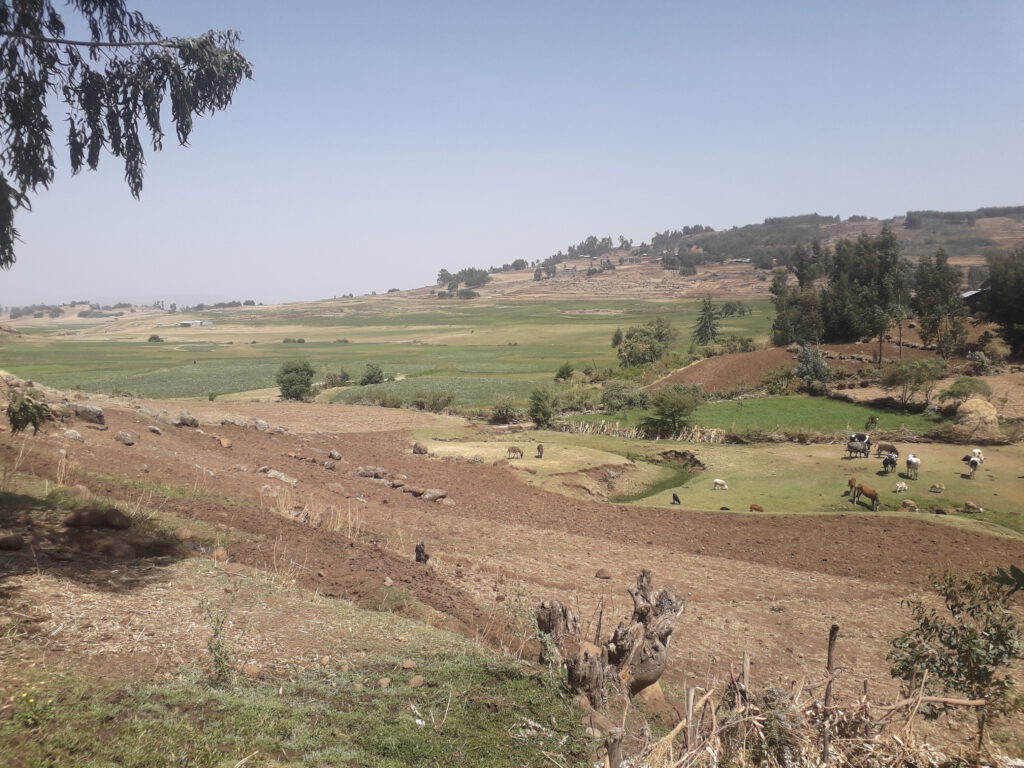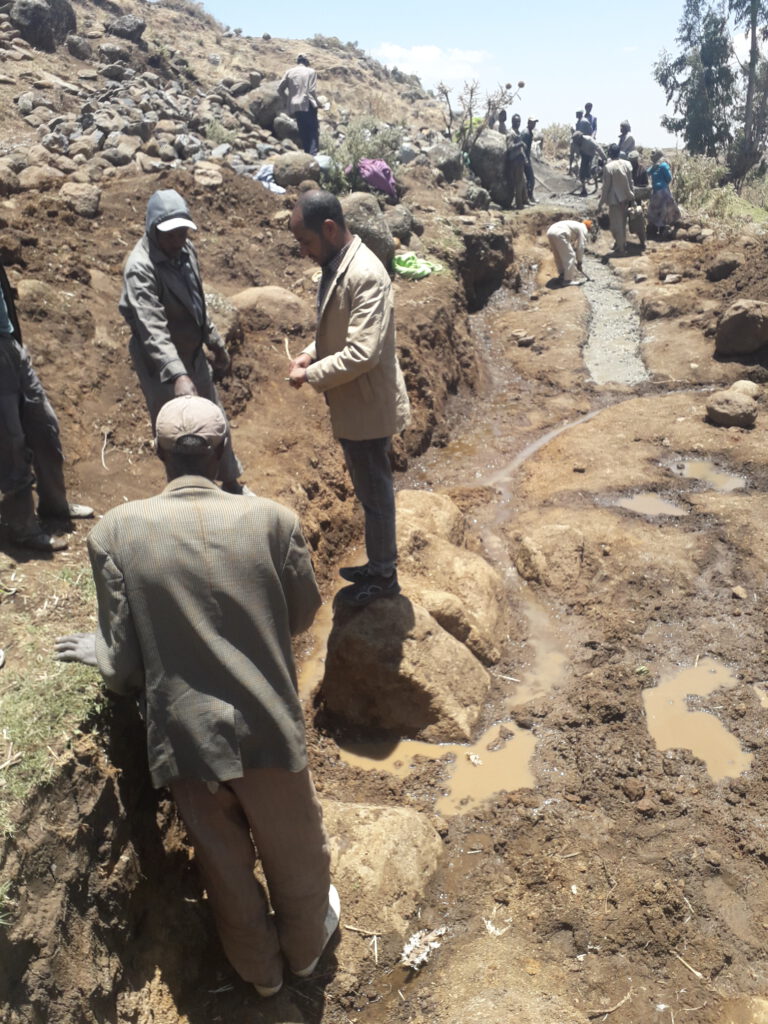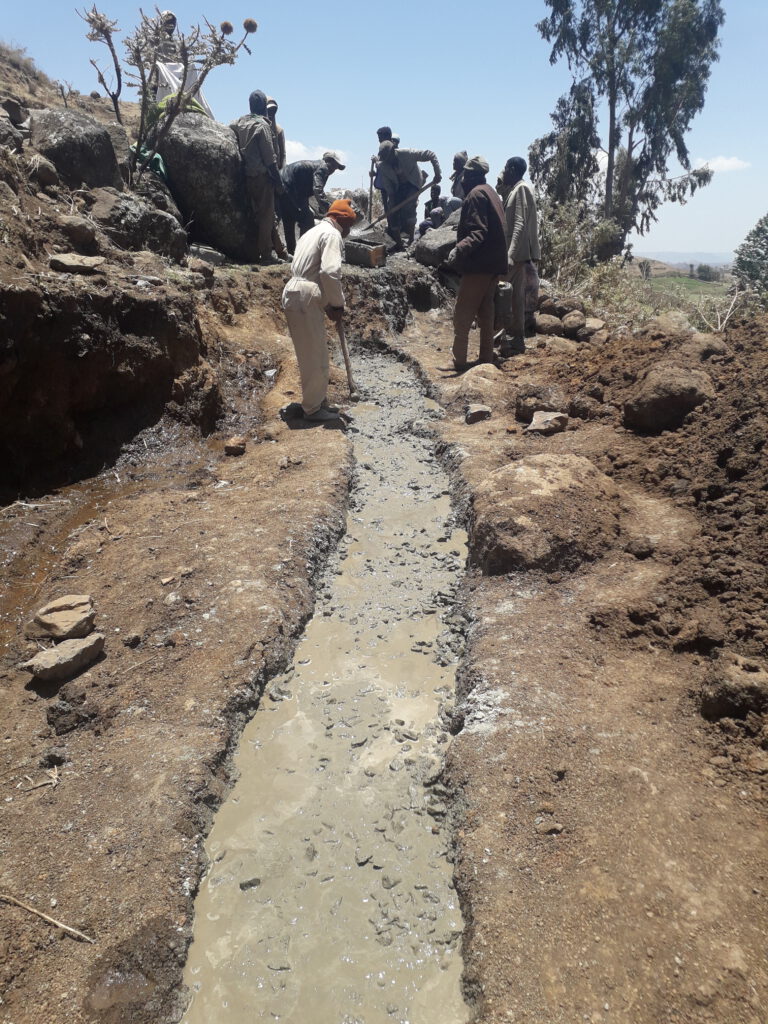Ethiopia
Abba Mote (Region Amhara)
Background
Only 57% of the population in Ethiopia has regular access to clean water. People in the project area have to travel long distances to fetch water from unsafe water sources. Because animals also use these sources, disease transmission is common. It is estimated that 60 to 80% of communicable diseases and 50% of cases of malnutrition in Ethiopia are due to limited access to clean water and sanitation.
Women and girls are typically responsible for carrying water in heavy jerry cans on their backs, which is physically demanding and also limits their ability to participate in school and community events.
Although the community is well motivated and organized, it is beyond their financial and technical capacity to carry out the work to ensure access to clean water without assistance.
Project Location
The Midago Geday spring is located in the Amhara region of Ethiopia, approximately 165 km from the capital city of Addis Ababa. The village (or “kebele” in Amharic) to be supplied with clean water is Werque, Tach Laga Hidha. It belongs to Abba Mote in the Amhara region.
Project beneficiaries
Beneficiaries actively participate in project development and implementation. To ensure that the project can be implemented, they provide construction materials and labor, as well as a limited amount of money. In addition, a water committee is formed in advance, and its members receive appropriate training to ensure the sustainable operation of the water supply system.
Beneficiaries of the project are 170 households with about 1000 people. In addition, 850 cattle, 2500 sheep and 340 donkeys can be supplied with the available 30000 liters of water per day from the spring.
Project activities
The unprotected spring targeted by this project is located about 3 km from the center of the relatively compact settlement of Abba Mote. This project will both protect the spring from possible contamination by humans and animals and reduce the distance to the protected water point by laying water pipes and constructing a water tank.
To develop and cap the spring, the source of the spring water is first identified. Excavation is then performed until impermeable soil or rock is reached. The excavation area will be covered with concrete walls and a poured concrete floor, and the surrounding area will be cleared. The area around the well will be backfilled with rocks and gravel. The entire area will then be covered with a concrete slab, leaving a manhole cover to clean and inspect the spring box. Finally, a retaining wall is constructed to protect the spring from flooding.
A masonry wall with concrete base and top slabs will be built on a solid foundation to store about 4 m3 of water and make it available when needed.
A 662 m long pipeline will bring the water from the source to the water tank and to the water intake point, which will be built at the end of the pipeline. This will provide the population with easier and closer access to clean water.
Sponsors
Rotary Club Augsburg-Römerstadt
Costs
7.500 Euro
Local partner organization
Environmentalists Development Association – Ethiopia (EDA-E)
Project period
April until June 2022


